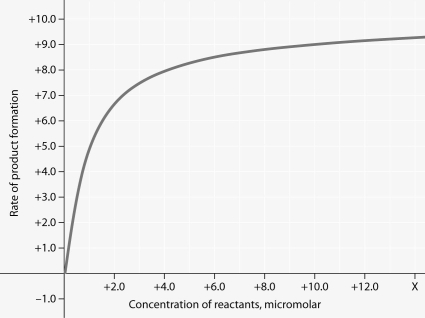
Rate of an enzyme-catalyzed reaction as a function of varying reactant
concentration, with the concentration of enzyme constant.
-For the enzyme-catalyzed reaction shown in the figure, which of these treatments will cause the greatest increase in the rate of the reaction, if the initial reactant concentration is 1.0 micromolar?
A) doubling the activation energy needed
B) cooling the reaction by 10°C
C) doubling the concentration of the reactants to 2.0 micromolar
D) doubling the enzyme concentration
E) increasing the concentration of reactants to 10.0 micromolar, while reducing the concentration of enzyme by 1/2
Correct Answer:
Verified
Q47: Zinc, an essential trace element for most
Q48: The mechanism in which the end product
Q49: Allosteric enzyme regulation is usually associated with
A)
Q50: In experimental tests of enzyme evolution, where
Q51: In order to attach a particular amino
Q53: Besides turning enzymes on or off, what
Q54: Which of the following statements describes enzyme
Q55: Which of the following is an example
Q56: How does a noncompetitive inhibitor decrease the
Q57: ![]()
Unlock this Answer For Free Now!
View this answer and more for free by performing one of the following actions

Scan the QR code to install the App and get 2 free unlocks

Unlock quizzes for free by uploading documents